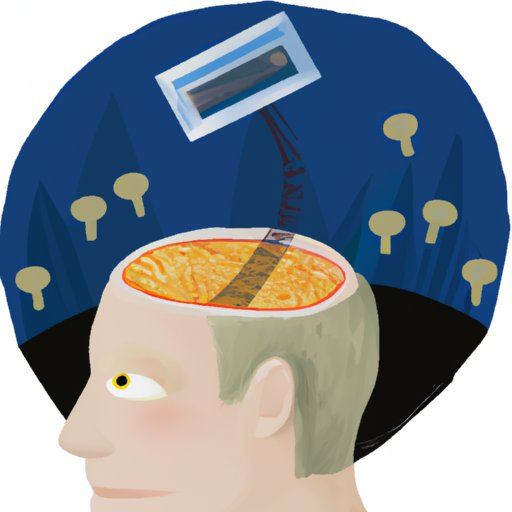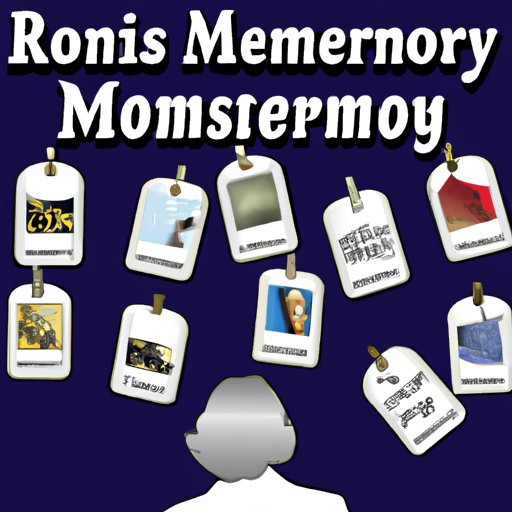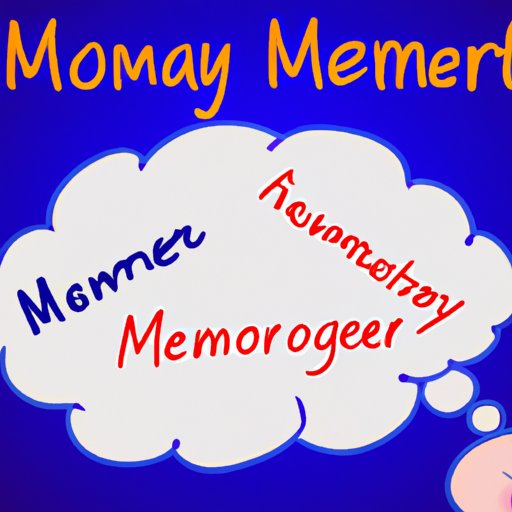Introduction
Memory is an essential part of our lives. It helps us remember past experiences, store new information, and recall important facts. But how does memory work? In this article, we will explore the neuroscience of memory formation and retrieval to gain a better understanding of how memory works.

Exploring the Neuroscience of Memory and How It Works
The brain is the most complex organ in the human body and is responsible for memory formation and retrieval. To understand how memory works, it is important to first understand the anatomy of the brain and how it functions. The brain consists of three main parts: the cerebrum, the cerebellum, and the brainstem. The cerebrum is the largest part of the brain and is divided into two hemispheres. It is responsible for higher-level thinking, such as problem solving, decision making, and language. The cerebellum is located at the back of the brain and is responsible for coordination and balance. The brainstem is responsible for basic bodily functions, such as breathing and heart rate.
Neurotransmitters are chemicals that act as messengers in the brain and are responsible for transmitting signals from one neuron to another. Neurotransmitters are involved in memory formation and retrieval, as well as other cognitive processes. For example, acetylcholine is responsible for learning and memory, while dopamine is involved in reward-seeking behavior.
Neuronal connections and synapses are also involved in memory formation. Neurons are cells that communicate with each other by sending electrical signals through neuronal connections. Synapses are the sites where neurons connect to each other and are responsible for transferring information from one neuron to another. When a neuron receives a signal, it sends a message to the next neuron through a synapse. This process is repeated until the information reaches its destination.

Examining the Different Types of Memory and Their Impact on Our Lives
There are several types of memory that are important for everyday life. Short-term memory, also known as working memory, is the type of memory that allows us to remember information for a short period of time. It is responsible for remembering phone numbers, directions, and other short-term tasks. Long-term memory is responsible for storing information for long periods of time. It is used for recalling facts and events from the past. Working memory is a type of memory that allows us to hold multiple pieces of information in our mind at once. It is responsible for completing complex tasks, such as solving math problems or playing chess.
These different types of memory have implications for everyday life. For example, if you are trying to remember a phone number, your short-term memory will be used to recall the digits. If you are trying to remember a fact, your long-term memory will be used to recall the information. And if you are trying to complete a complex task, your working memory will be used to juggle the various pieces of information.

The Role of Emotion in Memory Formation
Emotions play an important role in memory formation. Research has shown that positive and negative emotions can have a significant impact on our memory. Positive emotions, such as joy and excitement, can lead to increased memory recall, while negative emotions, such as fear and anxiety, can lead to decreased memory recall.
The interaction between emotion and memory is complex. Studies have found that emotional memories tend to be more vivid and easier to recall than neutral memories. Additionally, research has shown that emotions can influence the encoding and retrieval of memories, as well as the way we interpret them.
Investigating Memory Loss and How to Combat It
Memory loss can be caused by a variety of factors, including aging, trauma, stress, and certain medical conditions. Fortunately, there are strategies that can help combat memory loss. Regular exercise, a healthy diet, adequate sleep, and stress management can all help improve memory. Additionally, engaging in activities that require mental effort, such as puzzles and crossword games, can help keep the mind sharp and improve memory.
Analyzing Short-Term Memory, Long-Term Memory, and Working Memory
Short-term memory, long-term memory, and working memory are all important components of memory. Short-term memory is responsible for storing information for a short period of time, while long-term memory is responsible for storing information for longer periods of time. Working memory allows us to hold multiple pieces of information in our mind at once. Each type of memory has its own unique characteristics and is used for different purposes.
The difference between short-term, long-term, and working memory lies in the amount of information they can store, the duration of storage, and the complexity of the tasks they are used for. Short-term memory is limited in both capacity and duration, while long-term memory is much larger and can store information for much longer periods of time. Working memory has a limited capacity but can store information for longer durations and is used for more complex tasks.
Understanding How Memory is Stored and Retrieved
Memory is stored in the brain in a process called encoding. During encoding, information is converted into a form that can be stored in the brain. Memory cues, such as images, sounds, and smells, can be used to help with the encoding process. Once the information is encoded, it is stored in the brain for later retrieval.
Retrieval is the process of accessing stored information in the brain. It is aided by cues, such as images, sounds, and smells, which can help trigger the memory. Additionally, retrieval strategies, such as organization and chunking, can be used to help access stored information.
Exploring How Memory Can be Improved Through Mental Exercise
Mental exercise is a great way to improve memory and cognitive function. Studies have found that regular mental exercise can help improve memory, focus, concentration, and problem-solving skills. Engaging in activities that require mental effort, such as puzzles, crossword games, and reading, can help improve memory and cognitive function.
Mental exercise can also help reduce the risk of developing age-related memory loss. Research has shown that mentally stimulating activities can help protect against age-related cognitive decline and memory loss. Additionally, regular mental exercise can help improve overall brain health.
Conclusion
In conclusion, memory is an essential part of our lives. It helps us remember past experiences, store new information, and recall important facts. In this article, we explored the neuroscience of memory formation and retrieval to gain a better understanding of how memory works. We examined the anatomy of the brain and how neurotransmitters, neuronal connections, and synapses are involved in memory formation. We also looked at different types of memory and their implications for everyday life, as well as the role of emotion in memory formation. Finally, we discussed strategies for improving memory, such as regular mental exercise.
Memory is a complex process that involves many different components. By understanding how memory works, we can better understand how to improve our memory and cognitive function. With a better understanding of memory, we can make informed decisions about how to best use our memories to our advantage.
(Note: Is this article not meeting your expectations? Do you have knowledge or insights to share? Unlock new opportunities and expand your reach by joining our authors team. Click Registration to join us and share your expertise with our readers.)
